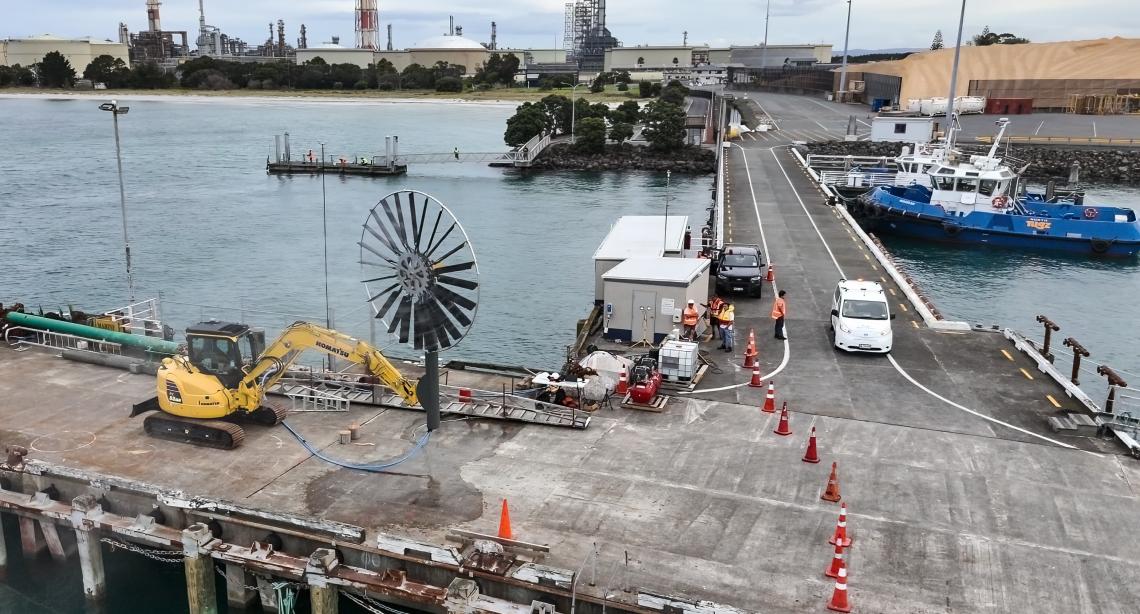Potential oceanic carbon capture and sequestering technology tested at Northport
Sharp-eyed observers of activity at Northport may have picked up a temporary addition to the eastern end of our tug jetty recently. The fan-like object spraying a fine mist of water could potentially play a vital role, at some point in the future, in removing carbon dioxide from the atmosphere and storing it safely on the ocean floor through marine calcifying organisms.
The Precipitor Project is the brainchild of Matakana-based Ecomerit Technologies Pacific Limited, assisted by the National Institute of Weather and Atmospheric Research (NIWA). Ecomerit says that it represents “an important effort in realizing New Zealand’s Net Zero goal by 2050 toward mitigating climate change.”
Like many technological innovations, the concept is simple. Ecomerit’s literature describes a process by which the fan-like Precipitor will use wind energy and sea water to produce what they call “a CO2 reactant”. This reactant is then dispersed down-wind as a fine mist. A chemical reaction with carbon dioxide in the air creates bicarbonate droplets. These fall onto the surface of the ocean, reducing the ocean surface acidity and enhancing its CO2 absorption capacity. The process concludes with the uptake of this carbon by marine calcifying organisms, at end of their lifecycles, resulting in “a stable form of carbon sequestration in the deep ocean and floor sediments.”
Learn more about the concept here.
Northport was delighted to provide a venue for a proving and demonstration base. Wind conditions at the port ideally suit the proposed ‘emitter plume dispersion’. For this trial the emitter dispersed a mist of filtered water only. During evening operation, laser lights were used to observe, measure and monitor the shape and nature of the plume of filtered water mist.
- ends-






